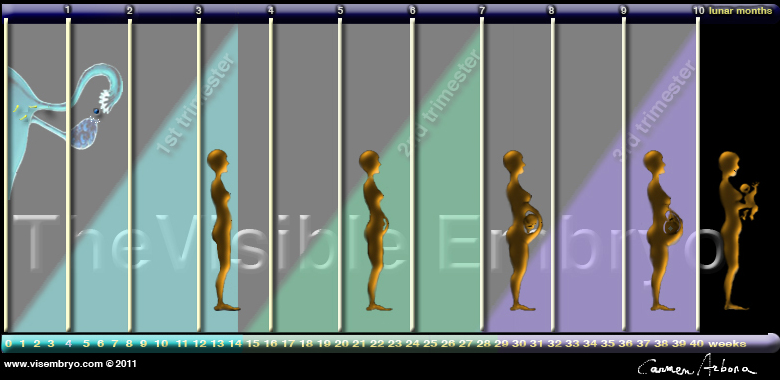|

Click weeks 0 - 40 and follow fetal growth
|
|||||||||||||||||||||||||||||||||||||||||
|
|
||||||||||||||||||||||||||||||||||||||||||
|
Expectant Fathers Need Prenatal Care and Support Found: New Gene That Causes Intellectual Disability May 12, 2011--------News Archive Cryopreserved Umbilical Cord Blood Same As Fresh High Pregnancy BPA Results In Infant Abnormalities May 11, 2011--------News Archive 15 Eggs Perfect Number To Achieve Birth After IVF Depression Treated Well In Moms Benefits Her Kids May 10, 2011--------News Archive Scientists Reveal Nerve Cells' Navigation System Stem Cell Technology Used In Unique Surgery May 9, 2011--------News Archive Mayo Clinic Turns Zebrafish Genes Off and On Autism in South Korea Estimated at 1 in 38 Children
|
CAMH Senior Scientist Dr. John Vincent identified the gene. His research is published in the 13 May 2011 issue of Cell. This international study combined Dr. Vincent's gene mapping of a family with Joubert syndrome, with the use of a protein network map established by researchers at Genentech Inc., Stanford University and the University of California at San Francisco (UCSF). Together this approach identified two genes associated with the group of disorders called ciliopathies. Joubert syndrome, which is a ciliopathy, affects brain functioning, resulting in intellectual deficits, movement and coordination problems and other symptoms such as kidney and eye problems. This syndrome is reported to affect approximately 1 in 100,000 children, although this is likely to be a significant underestimate of the true prevalence. Ciliopathies are caused by genetic defects to a part of the cell called the cilium. The cilium is crucial as it is involved with cell signaling pathways during cell development in different parts of the body. The other ciliopathy gene identified in this study leads to a condition called nephronopthisis, which is also associated with kidney and eye problems. "A defect in any aspect of this molecular pathway may have very similar effects at the clinical level," says Dr. Vincent, who is also head of the Centre for Addiction and Mental Health's Molecular Neuropsychiatry and Development Laboratory. Dr. Vincent's team found defects in the TCTN2 gene occurring in a family in Pakistan, in which four siblings had Joubert syndrome. The syndrome occurs when a child inherits a defective copy of the gene from each parent. The researchers based in California led the mapping of a network of potential proteins related to ciliopathies that interact on common pathways, as an approach to identify the disease genes. The study was a collaboration of researchers from six countries and more than a dozen centres. The lead authors were Peter Jackson and Liyun Sang at Genentech and Jeremy Reiter at UCSF. Other collaborators included Friedhelm Hildebrandt at the University of Michigan at Ann Arbor, Dan Doherty at the University of Washington in Seattle, Muhammad Ansar of Quaid-e-Azam University in Islamabad, and Julie Miller at Stanford University. Dr. Vincent previously discovered the CC2D2A gene, which is also associated with Joubert syndrome. Defects on this gene account for about 9 percent of cases of Joubert syndrome. To date, 10 genes have been connected with Joubert syndrome. The Centre for Addiction and Mental Health (CAMH) is Canada's largest mental health and addiction teaching hospital, as well as one of the world's leading research centres in the area of addiction and mental health. CAMH combines clinical care, research, education, policy development and health promotion to help transform the lives of people affected by mental health and addiction issues. CAMH is fully affiliated with the University of Toronto, and is a Pan American Health Organization/World Health Organization Collaborating Centre.
| |||||||||||||||||||||||||||||||||||||||||